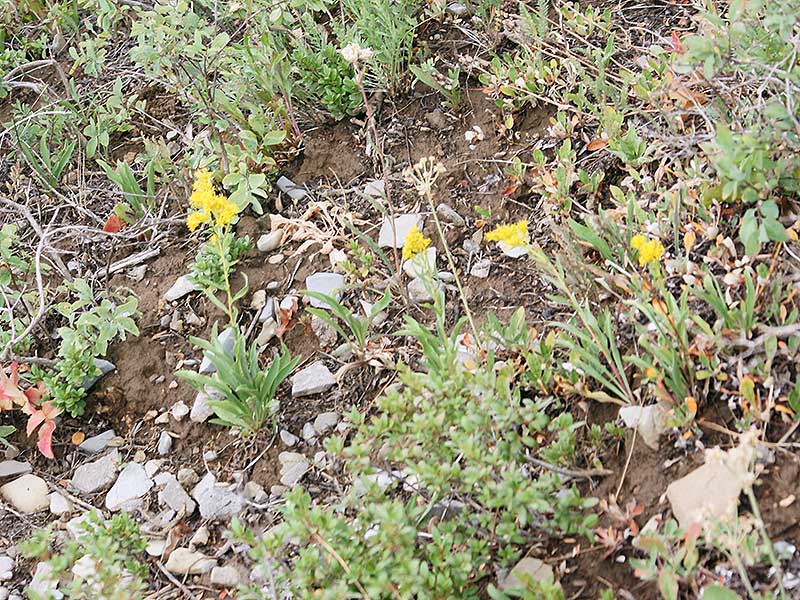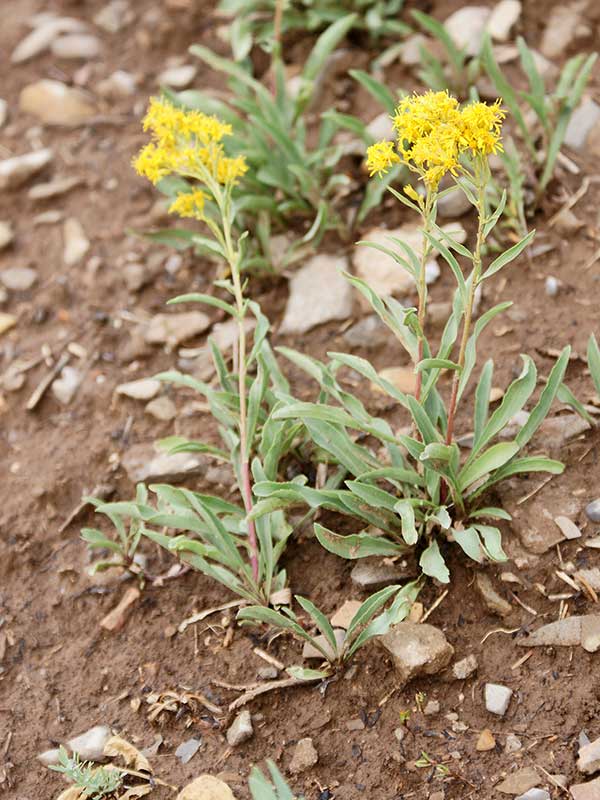Solidago multiradiata / alpine goldenrod
- the only (?) goldenrod at alpine altitudes
- clusters of 5-100 small, yellow composite flowers with a dozen-ish rays and 3 doz disc florets
- medium green lance/spoon shaped leaves, bigger at base of the plants; toothed/hairy edges
Also known as: Rocky Mountain goldenrod, northern goldenrod
Perhaps the easiest and best “field mark” for alpine goldenrod is its location. It is known mostly from the subalpine and alpine climates of high mountain ranges, and the photos in the gallery were taken on Fred’s Mountain. Its habitat includes tundra and mountain meadows. As far as I know, it is the only goldenrod that grows that high. Other than that…
Alpine goldenrod is a short-lived perennial herb – not a shrub – producing one or more stems from a branching caudex. They may either be upright or decumbent (along the ground). The stems vary in maximum length from 1 to 30 inches and grow in spring and summer.
Besides its location, the other obvious feature, common to all goldenrods, is its flowers… yellow and striking. The bloom is in the late summer. Individual plants produce clusters of between 5 and 100 flower heads, each consisting of 12 to 18 small yellow ray florets and a center of 10 to 35 small yellow disc florets. When the disc florets are mature, they are about the same length as the rays. Regardless, each flower is, as noted, teeny.
Alpine goldenrod leaves are medium green and deciduous. They are linear or lance-shaped, sometimes narrowing so much at the bases, you’d call them spoon- or spatula-shaped. They have petioles and rounded teeth around the tips. They can be up to 4 inches long at the base of the plant, but are smaller up the stem. Although mostly hairless, they may have hairs lining the toothed or serrated edges. Up-stem leaves are sessile, i.e. apetiolate, i.e without stalks. These are also more likely to have hairy edges.
Interesting bits – after oil spills in Alaska, this has been one of the first species to reappear.
| Color | |
|---|---|
| Family | |
| Blossom size | |
| Inflorescence size | |
| Inflorescence type | |
| When? | |
| Where? |


